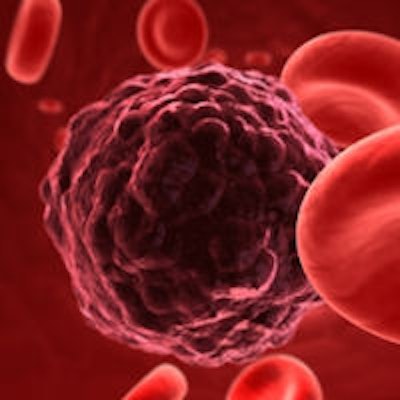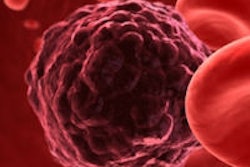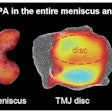
Patients with locally advanced squamous cell carcinoma of the head and neck treated with radiation therapy twice a day in two smaller doses, known as hyperfractionated radiation therapy (HFX), had improved local-regional control and better overall survival with no increase in late toxicity at five years, according to a new study in the International Journal of Radiation Oncology, Biology, Physics (May 1, 2014, Vol. 89:1, pp. 7-9).
"This study, one of only a few large studies to have follow-up beyond five years, demonstrates that patients who have head and neck cancers and who are being treated with radiation therapy alone have improved local-regional control and no increase in late toxicity when radiation therapy is delivered twice a day in two smaller doses," said lead study author Jonathan J. Beitler, MD, MBA, a professor of radiation oncology, otolaryngology, and hematology/medical oncology at the Winship Cancer Institute of the Emory University School of Medicine in Atlanta.
The study was a multi-institutional, randomized phase III trial of fractionation in locally advanced head and neck cancer. It was the largest study on fractionation to date.
The study analyzed more than 1,000 eligible patients from September 30, 1991, to August 1, 1997, who were age 18 or older and had previously untreated, locally advanced squamous cell cancers of the oral cavity, oropharynx, or supraglottic larynx in stage III or IV, or stage II to IV carcinoma of the base of the tongue or hypopharynx. The authors evaluated eligible patients who received standard fractionation (SFX) compared with those who received HFX, accelerated fractionation with a split (AFX-S), or accelerated fractionation-continuous (AFX-C).
Patients were randomized to one of four different treatment groups: SFX (2 Gy/fraction/day to 70 Gy in 35 fractions over seven weeks); HFX (1.2 Gy/fraction, twice daily, to 81.6 Gy over seven weeks); AFX-S (1.6 Gy/fraction, twice daily, to 67.2 Gy over six weeks, with a two-week break after 38.4 Gy); and AFX-C (total dose of 72 Gy delivered over six weeks in 1.8-Gy daily fractions and an additional 1.5-Gy boost field in the afternoon during the last 12 days of treatment). Patients received treatment five days a week. Those in the twice-daily treatment groups had a minimum interval of six hours between treatments.
Local-regional failure was analyzed at two years, five years, and last follow-up (the median follow-up was 14.1 years, as of October 2012). Toxicity and disease recurrence assessments were done weekly when patients received radiation therapy. After treatment completion, assessments were done every three months for one-and-a-half years, then every four months between one-and-a-half and three years. In years three to five after treatment completion, assessments were done every six months. After five years, patients had an annual assessment until death. Toxicities occurring 180 days or fewer from the start of radiation were considered acute, and those occurring more than 180 days after radiation therapy were considered late effects.
As of October 2012, just over half of the patients (568) had experienced local-regional failure, with more than 97% (553) of those occurring within the first five years.
Secondary primary cancers were reported in 18.6% of patients (200), with 50% (100) reported within the first three years, and 75% (150) reported within the first five-and-a-half years. After five-and-a-half years after treatment, the rates of secondary malignancies decreased to less than 1% per year. There were no significant differences in the rates of second malignancies among all four study groups.
At five years, when the SFX treatment patients were compared with the other three treatment groups, the prevalence of grades 3, 4, or 5 toxicity; any feeding tube use after 180 days; or feeding tube use at one year did not differ significantly. Grades 3, 4, or 5 toxicity tended to be decreased for patients treated for more than seven weeks compared with those treated more than six weeks (9.0% versus 16.7%, respectively), and 4.8% of disease-free patients treated with HFX had feeding tubes compared with 13.0% of patients treated with AFX-C.
After five years, patients in the HFX group had the highest overall survival rates at 37.1% (hazard ratio [HR] 0.81, 95% confidence interval [CI]), compared with 33.7% for the AFX-C arm, 29.3% for the SFX arm, and 29.0% for the AFX-S arm.
"The decrease in the rate of new cancers was unexpected," Dr. Beitler said. "However, the large database and the long follow-up provided us with a window into information that had not previously been available about the long-term patterns of head and neck tumors and is particularly heartening."
"The results suggest that twice-daily radiation may improve, cure, and limit late side effects for patients," he added. "Twice-daily radiation might be worth considering in place of concurrent chemoradiotherapy for those patients who are at low risk for distant metastases and those patients who cannot tolerate systemic therapy."



















